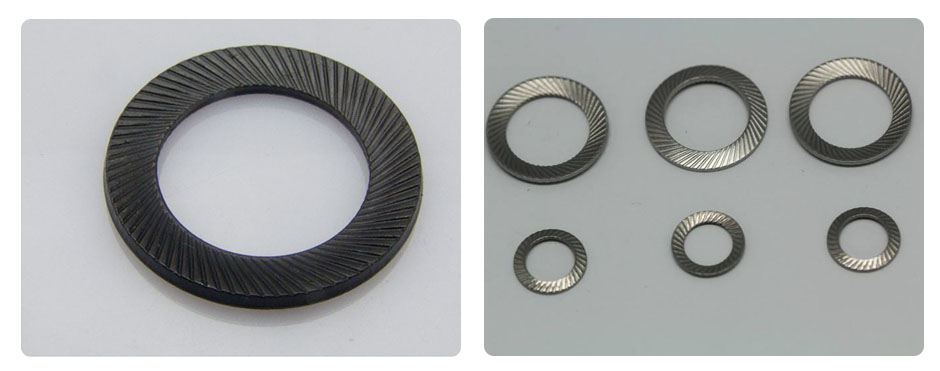Determining Tightening Torque for Spring Washers in Mechanical Applications
Understanding Spring Washer Tightening Torque Principles and Practices
In the world of mechanical engineering and fastening technology, the effective use of spring washers plays a crucial role in maintaining joint integrity and performance. Spring washers, often utilized in bolted connections, serve to absorb shock loads, compensate for vibration, and accommodate thermal expansion and contraction. However, achieving the correct tightening torque when using spring washers is essential to ensure their proper function and prevent premature failure of mechanical assemblies. This article delves into the concept of tightening torque for spring washers, the factors influencing it, and best practices for effective deployment.
What is Tightening Torque?
Tightening torque refers to the amount of rotational force applied to a fastener, such as a bolt or nut, to achieve a desired level of clamping force. In the context of spring washers, the tightening torque must be sufficient to compress the washer adequately, allowing it to perform its intended function while ensuring that the joint remains secure under various operational conditions. Insufficient torque can lead to a loss of preload, while excessive torque may cause damage to the bolt, nut, or the washer itself.
Importance of Correct Torque Application
The use of spring washers is prevalent in applications that experience dynamic loads, where traditional flat washers may not suffice. The primary purpose of a spring washer is to create a preload that keeps the fastened components in contact, thus preventing loosening due to vibration or load fluctuations. To achieve this effect, the correct tightening torque is essential.
When the correct torque is applied, the spring washer can deform slightly, storing energy that resists loosening forces and ensuring that the fastened joint remains tight over time. An incorrect application of torque can lead to one of two problems 1. Under-tightening, which can result in joint failure as the fasteners may loosen during operation. 2. Over-tightening, which can damage the washer or the components involved, potentially leading to equipment malfunction.
Factors Influencing Tightening Torque
Several factors should be considered when determining the appropriate tightening torque for spring washers
1. Material Properties The materials of both the fastener and the workpieces significantly affect the required torque. Harder materials might necessitate lower torque values to avoid stripping threads, while softer materials could require higher torque to achieve adequate clamping force.
spring washer tightening torque

2. Washer Type and Size Different types of spring washers, such as wave washers, Belleville washers, or tooth washers, have varying characteristics. Additionally, the size of the washer in relation to the fasteners will influence how much torque is needed to achieve the desired load.
3. Surface Conditions The presence of lubrication, surface roughness, and contaminants can alter the effective friction between components. Lubrication generally reduces friction, necessitating lower torque, whereas rough or dirty surfaces may increase friction and require higher torque to achieve the same clamping force.
4. Joint Configuration The design of the joint, including factors such as the number of bolts and the arrangement of components, will also influence required torque values.
Best Practices for Tightening Spring Washers
To ensure optimal performance of spring washers, following best practices in the application of tightening torque is essential
- Consult Manufacturer Guidelines Always refer to the manufacturer's specifications for torque values related to specific spring washers and fasteners. - Use Torque Wrenches Employ calibrated torque wrenches to accurately measure and apply the specified torque values, minimizing the risk of over or under-tightening. - Consider Torque Sequence In assemblies with multiple fasteners, utilize a proper tightening sequence to evenly distribute stress across the components.
- Check for Proper Compression After initial tightening, it is beneficial to inspect the spring washer to ensure it has been adequately compressed, indicating effective preload has been achieved.
Conclusion
Understanding and correctly applying tightening torque for spring washers is paramount in ensuring the longevity and reliability of mechanical assemblies. By accounting for various influencing factors and adhering to best practices, engineers can prevent issues like loosening and fatigue failure, thereby enhancing the overall performance of their designs. Striving for the right balance in torque application not only ensures safety but also optimizes the functionality of countless mechanical systems rely on these essential components.
-
Top Choices for Plasterboard FixingNewsDec.26,2024
-
The Versatility of Specialty WashersNewsDec.26,2024
-
Secure Your ProjectsNewsDec.26,2024
-
Essential Screws for Chipboard Flooring ProjectsNewsDec.26,2024
-
Choosing the Right Drywall ScrewsNewsDec.26,2024
-
Black Phosphate Screws for Superior PerformanceNewsDec.26,2024
-
The Versatile Choice of Nylon Flat Washers for Your NeedsNewsDec.18,2024










